
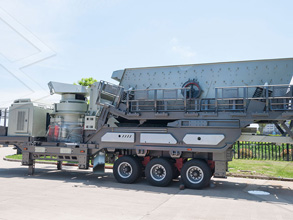
2021年3月17日· This process uses a series of physical steps and high temperatures to extract and purify copper from copper sulfide ores, in four basic steps: 1) froth flotation, 2) thickening, 3) smelting, and 4) electrolysis2022年10月1日· The simple leaching kinetics model proposed in this study can accurately describe the leaching process of copper These two environmentally friendly leachingKinetic characteristics and mechanism of copper leaching
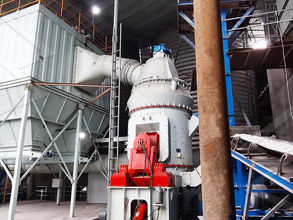
2006年9月1日· The autoclave oxidation of pyrite/sulfur will provide virtually all acid and ferric sulfate (and heat) required for the copper leaching process The process can be2022年11月16日· Coppermaking from sulfide concentrates entails two major steps: smelting and converting In continuous directtocopper smelting process these twoKinetics of copper leaching from directtoblister copper flash
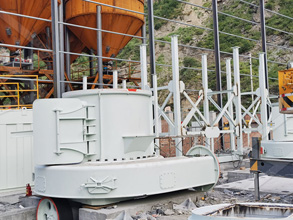
2022年2月25日· Within the development of models, the most used to model the copper leaching dynamics (and the leaching of other minerals) are the shrinking core models () and the progressive conversion models (PCM), kinetic models used to analyze the processes kinetics in which2023年6月9日· The use of this biochemical method in the copper leaching process resulted in a significant reduction in sulfuric acid consumption, by 40%, and a copperStudy of Factors Affecting the Copper Ore Leaching Process

Abstract The study of copper (Cu) recovery is crucial for the entire recovery process of waste printed circuit boards (WPCBs), and Cu can be leached efficiently via a sulfuricregarding the mathematical modelling of the leaching process of copper minerals, establishing an overall picture of the scientific literature on technological developmentsCopper Mineral Leaching Mathematical Models A Review
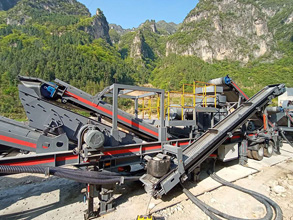
There are three basic approaches to commercial copper heap leaching—runofmine, dedicated pad, and onoff pad leaching, with variables that include crushing, acid/ferric2019年4月19日· Extraction of copper from suitable ore by leaching methods is generally assumed to cost less than the combined expense of concentration, smelting, and refining, and experimental data tend to confirm this opinion At the ButteDuluth plant, which is handling in excess of 100 tons of oxidized ore daily, the copper is said to cost $0085Copper Leaching Method 911 Metallurgist
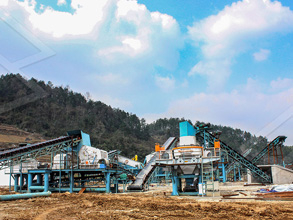
6 Therefore, presumably, the recognition of a natural copper leaching process can be identified as early as that date Ironrich acidic waters draining from abandoned coal and metal mines as well as from unmined mineralized areas are another evidence of microbial leaching2021年4月30日· The aim of this study is to design and develop an efficient leaching process based on a fundamental and theoretical thermodynamic analysis and the optimization of the operation parameters via the response surface methodology (RSM) Using this methodology, the design of a leaching process for the recovery of copper,Leaching of Metals from eWaste: From Its Thermodynamic

2020年9月8日· Similar to copper oxide heap leaching, also using dilute sulfuric acid The final product is yellowcake (\(U3O8\)) and requires significant further processing to produce fuelgrade feed Acid leaching is sometimes also referred to as heap leaching (Figure \(\PageIndex{1}\)) because the leaching process can be performed on large2023年6月9日· The composition of copper ore samples was analyzed with the use of fluorescence and chemical methods Table 1 shows the content of the main valuable component—copper—as well as metals with the highest content that affect the leaching process Table 1 Amount of copper and other metals in copper ore samples (%)Study of Factors Affecting the Copper Ore Leaching Process

2022年6月8日· The miner has estimated that there are 19 billion pounds of copper unrecoverable by traditional leaching methods at the openpit mining complex With the new leaching technologies, Freeport said that it could boost its annual copper production by at least 100 million lbs within a few years, equivalent to roughly 26% of its output in 20212022年12月24日· Microbial ore leaching (bioleaching) is the process of extracting metals from ores with the use of microorganisms This method is used to recover many different precious metals like copper, lead, zinc, gold, silver, and nickel Microorganisms are used because they can: lower the production costs cause less environmental pollution in166A: Microbial Ore Leaching Biology LibreTexts

2023年6月9日· Study of Factors Affecting the Copper Ore Leaching Process Aigul Koizhanova, Bagdaulet Kenzhaliyev, David Magomedov * , Emil Kamalov, Mariya Yerdenova, Akbota Bakrayeva and Nurgali Abdyldayev JSC Institute of Metallurgy and Ore Beneficiation, Satbayev University, Shevchenko 29/133, Almaty , KazakhstanHeap leaching is a technique for extracting metals from lowgrade ores by applying a solution that dissolves the minerals and collects them at the bottom This topic covers the principles, applications, challenges and innovations of heap leaching, with examples from copper, gold, silver, uranium and saltpeter extractionHeap Leaching an overview | ScienceDirect Topics

2021年3月17日· This continuous process is performed on a massive scale: A typical pad measures 16km (1mile) long and 08km (05miles) wide Working day after day, the stacker creates individual piles or modules on the pad, each 122 x 61 m (400 by 200 ft) and 3 m (10 ft) deep When one module is filled, it moves across the pad to the next, filling the2020年8月6日· Leaching of copper from a Jordanian copper ore has been studied using a stirred batch reactor with hydrochloric acid as the main lixiviant, under the following conditions: temperature 25 – 45 oCLeaching of Copper Ores: Effects of Operating Variables

2006年9月1日· The Anglo American Corp/University of British Columbia (AAC/UBC) Copper Process is a mediumtemperature leaching process for chalcopyrite concentrates The concentrate is reground to fine size (P 80 5–20 μm) and leached under moderate pressure at 150 °C in an acid–sulfate system2022年1月15日· Recently, Han et al (2018) used an autoclave to study copper leaching from old Bor copper mine flotation waste The authors found that a H 2 SO 4 concentration of 05 M, a pressure of 2 MPa, a temperature of 180 C, a leaching]Bioleaching Process for Copper Extraction from Waste

2021年10月13日· Heap leaching is a firm extractive metallurgical technology facilitating the economical processing of different kinds of lowgrade ores that are otherwise not exploited hydrometallurgy leaching gangues clays minerals heap leaching agglomeration 1 Introduction According to Toro et al [ 1], copper mining is an industry that is in constant2023年10月10日· Leaching with biogenic agents involved a 240min process using ferrous sulfate pentahydrate, salts, and bacteria, extracting a maximum of 80% copper within 10 min In 2021, Alvarez [ 42 ] processed tailings from Ramba del Real, Murcia, Spain, characterized with WDXRF and XRD, revealing Zn and Cu contents of 138% andThe Use of Acid Leaching to Recover Metals from Tailings: A

2022年11月16日· Coppermaking from sulfide concentrates entails two major steps: smelting and converting In continuous directtocopper smelting process these two steps are combined into one The principal advantages of this process are: isolation of SO2 emission to a single, continuous, SO2rich gas stream, minimization of energyand effectiveness of industrial leaching applications Finally, conclusions, challenges and future directions of the copper leaching modeling are presented in Section4 2 Leaching Process 21 Overview and Industrial ApplicationsCopper Mineral Leaching Mathematical Models A Review

2015年7月1日· required for the copper leaching process (Dreisi nger, 2006) Leach re actors are operated at atmospheric pressure near the boiling point of the sl urry The leach2012年1月1日· In this process, ammonia leaching of sulfide minerals of copper, nickel, cobalt and iron was conducted at a temperature of about 105 °C and air pressure of 8 ATM Under these c onditions, copperAmmonia leaching in the copper industry: a review

2019年1月1日· Hydrometallurgical extraction accounts for about 20% of total primary copper production Most of this is produced by heap leaching Heap leaching consists of trickling H2SO4containing lixiviantIn the 1970s the largest plant for microbial leaching was that for dump leaching of the Kennecott Copper Corporation at Bingham, UT, USA The contents of the dumps stored there were estimated at more than 36×10 9 tons and about 200 tons of copper were recovered every day by bioleachingBioleaching: metal solubilization by microorganisms

1998年10月30日· Both processes are capable of producing cathode copper of more than 999 percent purity Copper processing Roasting, Smelting, Converting: Once a concentrate has been produced containing copper and other metals of value (such as gold and silver), the next stepwhole copper production chain, from mine to metal Leaching Electrowinning Tankfarm Solvent Extraction Sulfidic/oxidic copper ore Cathode copper Leaching: • Leaching process with proprietary equipment • VSF solventCopper SXEW technology minevik

2016年4月14日· Copper Agitated Leaching and cementation process of copper problem: The treatment of copper ores, both oxides and sulfides by means of flotation, hydrometallurgy or other processes has been well established for many years Flotation has been applied generally to the treatment of sulfide ores, both in small and large scale2016年3月9日· Insitu leaching started as early as 1986 at San Manuel while the open pit was still active It was known at that time that some of the copper resource was not going to be recoverable byInsitu copper leaching is a proven technology

2022年6月13日· New Technology of Acid Heap Leaching of Copper Ore 1) The copper oxide ore is screened after twostage crushing, the material on the screen is sent to the storage yard for conventional acid heap leaching, and the material under the screen enters the thickener; 2) The underflow of the thickener enters the granulator after adding binder2022年7月22日· Heap leaching, a process used to extract copper, uranium, and some precious metals from their ores Another process in which copper and uranium are recovered via a process called InSitu Leaching Tank Leaching and Vat Leaching are processes wherein the ores are placed in large tanks (or vats) which contain leachingLeaching Process Chemistry of Extracting Substances via

Since the copper ion is exchanged for hydrogen ion, the aqueous phase is returned to its original acidity and recycled to the leaching step of the process Meanwhile, the copperbearing organic phase is stripped of its copper by contacting it with a strongly acidified aqueous solution at which time the copper is moved to the aqueous phase while theChalcopyrite (CuFeS2) is one of the most abundant copperbearing minerals, which accounts for approximately 70 percent of the world’s known copper reserves For more than 30 years, a significant number of processes have been developed to leach copper from chalcopyrite concentrates These processes recover copper via hydrometallurgicalCopper leaching from chalcopyrite concentrates | JOM

2022年7月12日· It can be seen from Eq () that the higher the Fe 3+ concentration, that is, the higher the redox potential, the higher the leaching rate of chalcopyriteHirato et al [] testified that the leaching of chalcopyrite showed paraboliclike kinetics initially and then showed linear kinetics, and that Fe 3+ influenced the leaching rate of copper and thehydrometallurgical process only during the leaching of waste dumps Need for Hydrometallurgical Processes Since most of the copper production in the world comes from the treatment of sulfide ores, hydrometallurgy has thus 2LEACHING OF COPPER CONCENTRATES University of
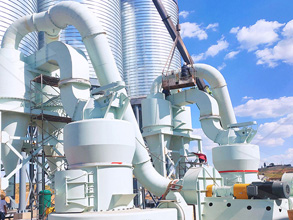
November 9, 2018 : The Oxidative Leaching technology is a more efficient and profitable alternative to smelting In an effort to improve leach kinetics and recoveries of primary copper concentrates, minerals process solutions provider developed the OxidativeHeap leaching copper from oxide and secondary sulfide ores has been practiced commercially since the late 1960’s This methodology is mostly used for lowgrade ores and involves the following basic processing steps: Mining, Crushing, Leaching, Solvent Extraction (SX) and Electrowinning (EW) Depending on ore characteristics otherLixTRA™ – Novel Copper Leach Technology BASF

Copper pressure leaching process consists of the following main steps: Concentrate repulping Pressure oxidation of sulfides Hot curing Solidliquid separation Neutralization Copper solvent extraction Copper electrowinning Water2021年2月12日· One of the main goals of the leaching process is to obtain the greatest copper production by saving resources and being the least possible aggressive to the environment As has been described by the authors of [ 3 ], the copper leaching process involves tasks, such as irrigation beginning and maintenance, agglomerate conditionSensors | Free FullText | A Comparative Study on

2022年10月14日· Adam Burley, Rio Tinto’s Nuton venture lead, said at the core of Nuton is an elevated temperature bioleaching process that can, in the right thermochemical conditions, deliver “peak” copper recovery from primary sulphides such as chalcopyrite “Taking advantage of naturallyoccurring processes, we have nurtured a culture of2021年9月1日· Abstract In copper dump leaching, runofmine ore is irrigated with acidic leaching solution to generate aqueous cupric ions for further processing The very large size of the ore particles being leached, as much as two meters in diameter, should preclude any significant metal recovery Dump leaching should not work; and yet it doesHow copper dump leaching works ScienceDirect

Continuous innovation for more efficient extraction Leaching is one of the most sustainable copper recovery technologies, used mainly with ores close to the earth's surface However, it is inefficient with those found deeper, such as chalcopyrite, which is present in 70% of available reserves2017年5月5日· Applying Softcomputing for Copper Recovery in Leaching Process Claudio Leiva, 1Víctor Flores, 2Felipe Salgado, 1Diego Poblete, 1and Claudio Acuña 3 Academic Editor: Jezreel MejiaMiranda Received 05 May 2017 Revised 10 Oct 2017 Accepted 30 Oct 2017 Published 05 Dec 2017Applying Softcomputing for Copper Recovery in Leaching Process

3 Dynamic Modeling of Heap Leaching— Design and Operation Criteria Impact on Production J Bartlett * and FL Bazzanella † METSIM is being used to model numerous processes in both steadystate and dynamic configuration
